Möchten Sie dieses Panda-Dessert probieren?




(Quelle: CRI Deutsch)
Möchten Sie dieses Panda-Dessert probieren?




(Quelle: CRI Deutsch)
Der chinesische Ministerpräsident Li Qiang hat am Dienstag in der nordchinesischen Stadt Tianjin an einem Unternehmerdialog des 14. Jahrestreffens der New Champions, auch bekannt als „Sommer-Davos“, teilgenommen.
Li sagte dabei, die Weisheit und die Stärke der Unternehmer seien unverzichtbare Kräfte für die wirtschaftliche Entwicklung. Er hoffe, dass die Unternehmer ihr Verständnis für China verbessern könnten.
China sei ein offenes, integratives und ehrliches großes Land, das sich nicht nur seiner eigenen Entwicklung widme, sondern seine Möglichkeiten auch proaktiv mit anderen Ländern teile. Chinas Entwicklung könne Stabilität und positive Energie einbringen sowie dem Rest der Welt ein Gefühl der Sicherheit vermitteln.
China wolle mit allen Beteiligten zusammenarbeiten, um die Entwicklung von Spitzentechnologien voranzutreiben sowie neue Bereiche der Zusammenarbeit zu erschließen, die einen neuen und breiteren Raum für Investitionen und die Entwicklung von Unternehmen schaffen sollten, so der chinesische Ministerpräsident weiter.
Der Dialog wurde von Klaus Schwab, dem geschäftsführenden Vorsitzenden des Weltwirtschaftsforums, geleitet. Über 120 Unternehmer aus mehr als 20 Ländern und Regionen waren anwesend.
(Quelle: CRI Deutsch, Xinhuanet)
On June 8, 2023, Philippe Baptiste, President of the Centre National d’Études Spatiales (CNES), and Zhang Kejian, Director General of the China National Space Administration (CNSA), signed a Memorandum of Understanding at their headquarters in Paris for the carrying of the Detection of Outgassing RadoN (DORN) on the Chang’e 6 lunar sample return mission.
The meeting was also an opportunity to exchange views on the Space Variable Objects Monitor (SVOM) project and the excellent cooperation between France and China in the framework of the Sino-French Oceanographic Satellite. The Structural-Thermal Model (STM) component of the DORN arrived in Beijing on May 4 and has now been integrated into the Chang’e 6 lander. Its flight module will be delivered to China in July 2023.

The SVOM project will start in 2024 to detect gamma-ray bursts in the universe to infer the explosion of massive stars or the fusion of neutron stars or black holes. The SVOM satellite will carry four pieces of equipment: a multi-channel (narrow-field) X-ray telescope (MXT) and a trigger camera for wild-filed X and gamma-ray telescope (ECLAIRs) from France, a gamma-ray burst monitor (GRM), and a narrow-field visible telescope (VT) from China. Among them, the MXT and ECLAIRs arrived in Shanghai in March 2023 after completing their final tests. As of today, the payload module is fully assembled, bringing together French and Chinese instruments, and has successfully performed preliminary electrical tests.
On the occasion of the French President’s state visit to China in April this year, article 22 of the latest joint statement issued by France and China refers to the cooperation between the two countries in the field of space that both sides are satisfied with the cooperation between their space agencies around Chang’e-6 and the joint research on extraterrestrial samples. In addition, China presented France with 1.5 grams of lunar soil samples brought back from the Chang’e 5 mission.
The Chang’e 6 probe was developed by the Fifth Academy of China Aerospace Science and Technology Corporation (CASC). As early as 2019, China and France had signed a letter of intent for the lunar exploration program, in which French scientific research equipment would ride on China’s Chang’e 6 lunar probe to explore the moon with China.

In 2019, Jean-Yves Le Gal, president of the French National Space Agency (CNES), had said on social media platforms that the French side was ready to carry about 15 kg of equipments on Chang’e 6, including a camera and an analyzer, to facilitate research on the study of the Moon.
Chang’e-6 is scheduled to be launched in May 2024, just as France and China celebrate the 60th anniversary of diplomatic relations. The Chang’e-6 mission will land on the back of the Moon and is expected to bring back a two-kilogram sample of lunar soil.
The Chang’e-6 mission is expected to achieve the first sample return of a human spacecraft from the back of the Moon and is proposed to be implemented around 2025. The Chang’e-6 mission was chosen to land on the back of the Moon, allowing for the discovery and collection of lunar samples of different ages from different regions. The engineering goal of Chang’e-6 is to break through the lunar retrograde orbit design and control technology, lunar back intelligent sampling technology and lunar back takeoff and ascent technology to achieve automatic lunar back sampling return, while carrying out effective international cooperation.
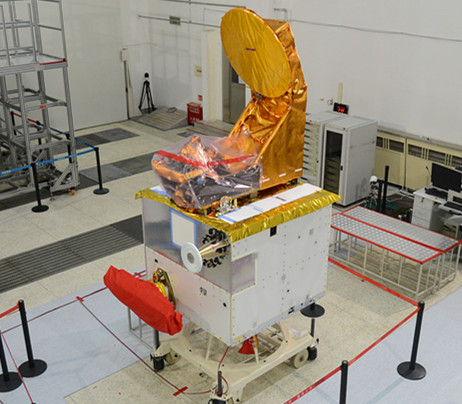
As the first Western country to establish diplomatic relations with China since the founding of the People’s Republic of China (PRC), France has been actively cooperating with China for decades, especially in the field of space technology.
Since the signing of the cooperation agreement between the two governments in 1997, a series of initiatives in the fields of satellite engineering, human spaceflight, deep space exploration and Earth observation have been carried out in an orderly manner, and have achieved remarkable results for the world.
Back in 2005, China and France signed an agreement to promote cooperation in the field of astronomical and oceanographic satellites, and the Sino-French Ocean Satellite Project Team was officially established. In the 13 years of cooperation and research since then, the Chinese side is responsible for the launch, measurement and control, providing launch vehicles and satellite platforms, and developing new microwave scatterometers; the French side is responsible for the development of ocean wave spectrometers.
In terms of Earth observation, CNES and China National Space Administration (CNSA) congratulated the scientific achievements of the Sino-French Ocean Satellite Project launched in 2018. The exchange also highlighted China’s participation in the Space Climate Observatory (SCO) cooperation through two projects to map the Yangtze River wetlands and monitor CO2 fluxes.

On October 29, 2018, the Long March-2C launch vehicle carried the China-France Oceanography Satellite (CFOSAT), which took off from China’s Jiuquan Satellite Launch Center and headed for space 520 km away. Based on China’s mature CAST2000 satellite platform, CFOSAT carries a French wave spectrometer and a scatterometer developed by China, which are used for wave research and ocean monitoring respectively.
This is the first satellite developed in cooperation between the governments of France and China, marking an important step in space cooperation between the two countries.
As the first satellite to synchronously observe the global wave direction spectrum and sea surface wind field, CFOSAT has provided a large amount of sea wind and wave observation data since it was put into operation, playing an important role in oceanography, meteorological forecasting, climatology and other research fields, and providing a new observation perspective to address global climate change.
Since its launch, CFOSAT has distributed data to several users, and dozens of scientific teams in several countries and regions around the world have used the satellite’s shared data to serve scientific research and optimize weather forecasting systems. These data have been applied in typhoon disaster monitoring, North and South Pole sea ice monitoring, marine numerical weather forecasting and short-term forecasting demonstration verification, the effect is good. The CFOSAT has a design life of 3 years, and has entered into extended life operation from 2021. Through the joint efforts of both parties, it will continue to contribute to revealing the changes of ocean dynamics and environment.
“The CFOSAT has created many firsts, it is the first large-scale joint space mission between CNES and the CNSA, and a landmark project of cooperation between the two countries. This project clearly demonstrates that international cooperation can be of great benefit when planning and execution are in place and take advantage of the complementary expertise of both parties.” Philippe Baptiste, President of CNES, said at a conference to mark the 4th anniversary of the CFOSAT’s operation in orbit.
(Source: China National Space Administration, China Academy of Space Technology, AIAA, CNES, CGTN)
Der chinesische Staatspräsident Xi Jinping ist am Dienstagnachmittag in der Großen Halle des Volkes mit Neuseelands Ministerpräsident Chris Hipkins, der zu einem offiziellen Besuch in China weilt, zu einem Gespräch zusammengekommen.
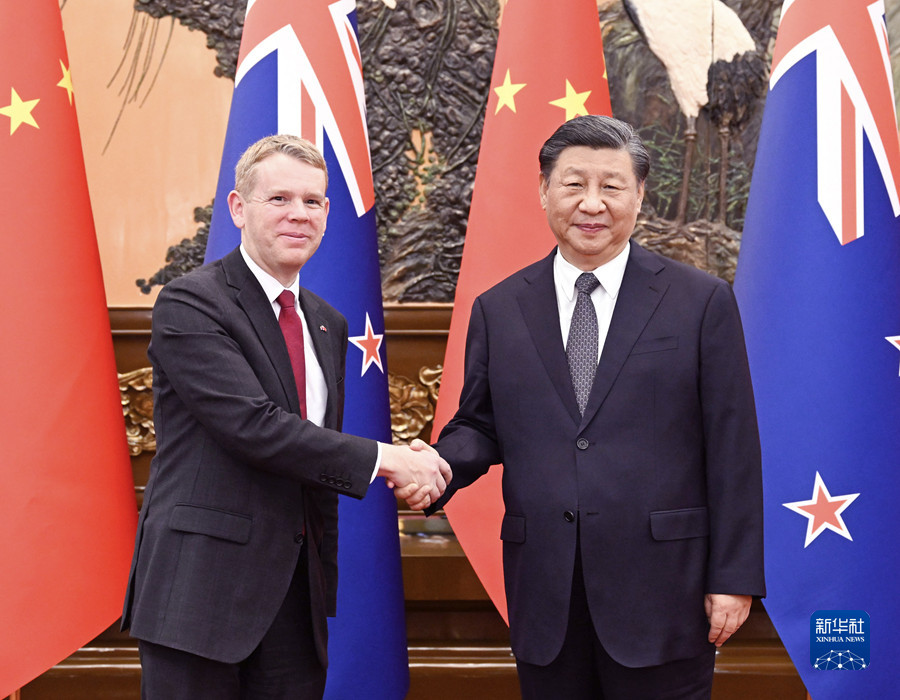
Dabei sagte Xi, er habe 2014 Neuseeland besucht. Während dieses Besuchs hätten China und Neuseeland den Aufbau einer umfassenden strategischen Partnerschaft angekündigt. Seit 10 Jahren hätten sich die bilateralen Beziehungen gesund und stabil entwickelt, was den Völkern beider Länder greifbare Vorteile gebracht habe. Wir sollten uns gemeinsam darum bemühen, ein neues Kapitel der chinesisch-neuseeländischen Beziehungen für die künftigen 50 Jahre aufzuschlagen und eine stabile und langfristige Entwicklung der umfassenden strategischen Partnerschaft zwischen beiden Ländern zu fördern, so Xi Jinping.
Chris Hipkins sagte, die Beziehungen zwischen Neuseeland und China erfassten mehrere Bereiche und Ebenen, wie etwa Wirtschaft, zivile Angelegenheit und Kultur. Er hoffe, dass sein China-Besuch die bilaterale Zusammenarbeit weiterhin ausbauen werde.
(Quelle: CRI Deutsch, Xinhuanet)
Das 14. Sommer-Davos-Forum findet vom 27. bis 29. Juni in Tianjin statt. Verfolgen Sie unsere Aufnahmen und erleben Sie die Dynamik der Entwicklung von Tianjin aus der Vogelperspektive.





(Quelle: CRI Deutsch, VCG)
Entlang des Gelben Flusses nach Osten bis in die Touristengebiete vom Bezirk Baiyin der Provinz Gansu, wo Besucher die „Poesie und die fernen Landschaften“ erleben können.
„Die ländliche Tourismusindustrie im Bezirk Baiyin hat sich stets an die örtlichen Vorteile angepasst und modische Elemente mit kultureller Kreativität kombiniert, um den Zeitgeist sowie die städtische Vitalität widerzuspiegeln“. Dies sagte Wang Senliang, Direktor des Büros für Kultur und Tourismus des Bezirks Baiyin in der Provinz Gansu.

Der Bezirk Baiyin liegt am Oberlauf des Gelben Flusses, im Hinterland von Gansu und am nordwestlichen Rand des Lössplateaus. Baiyin verfügt in seinem Gebiet daher über reiche touristische Ressourcen. Der Juni bietet in Baiyin ein ganz besonderes Bild: Eine Blume nach der anderen blüht und Touristen folgen dem Blumenduft, um die Spezialitäten an den Essensständen zu probieren.
Laut Wang hat die ländliche Tourismusindustrie im Bezirk Baiyin die Rolle von Vereinen wie Fotografie, Dichterlesung und Kalligrafie durch innovative Ideen voll ausgeschöpft sowie Fotoausstellungen und Veranstaltungen in die Entwicklung der Tourismuszonen integriert. Darüber hinaus bereichert die Region weiterhin das neue Geschäftsfeld der Unterkünfte, sodass sich immer mehr Touristen für individuelle, hochwertige und erlebnisorientierte Übernachtungsmöglichkeiten entscheiden.

Statistiken zufolge zählte der Bezirk Baiyin während der Feiertage des Drachenbootfestes insgesamt 157.700 Touristen. Dadurch wurden 80,438 Millionen Yuan RMB Tourismus-Einnahmen erzielt, womit ein Anstieg von 162 Prozent erreicht wurde. Im Moment ist eine gute Zeit für den ländlichen Tourismus. Viele Bürger begeben sich in die schöne Landschaft rund um den Bezirk Baiyin, um eine schöne Zeit zu genießen.
In den letzten Jahren hat der Bezirk Baiyin seine besonderen touristischen Ressourcen voll genutzt, um die lokale Tourismuswirtschaft zu entwickeln. Heute ist die schöne Landschaft zu einem Urlaubsziel für die Öffentlichkeit geworden und der ländliche Tourismus hat sich zu einem neuen Konsumschwerpunkt entwickelt.
Wang sagte, dass der Bezirk Baiyin auch die Merkmale der Region und die lokalen Bräuche auf dem Lande eng miteinander verbinden werde. Man werde das Potenzial weiter ausschöpfen, die Qualität der touristischen Produkte verbessern sowie sich auf die Steigerung der Attraktivität für Touristen konzentrieren.
(Quelle: CRI Deutsch, Chinanews)
Bei der Stichwahl zur Wahl des neuen Landrates im Kreis Sonneberg in Thüringen hat am Sonntag, dem 25. Juni, Robert Sesselmann von der Alternative für Deutschland (AfD) gewonnen. Dies ist das erste Mal seit ihrer Gründung im Jahr 2013, dass die Partei die Kommunalwahl gewonnen hat.
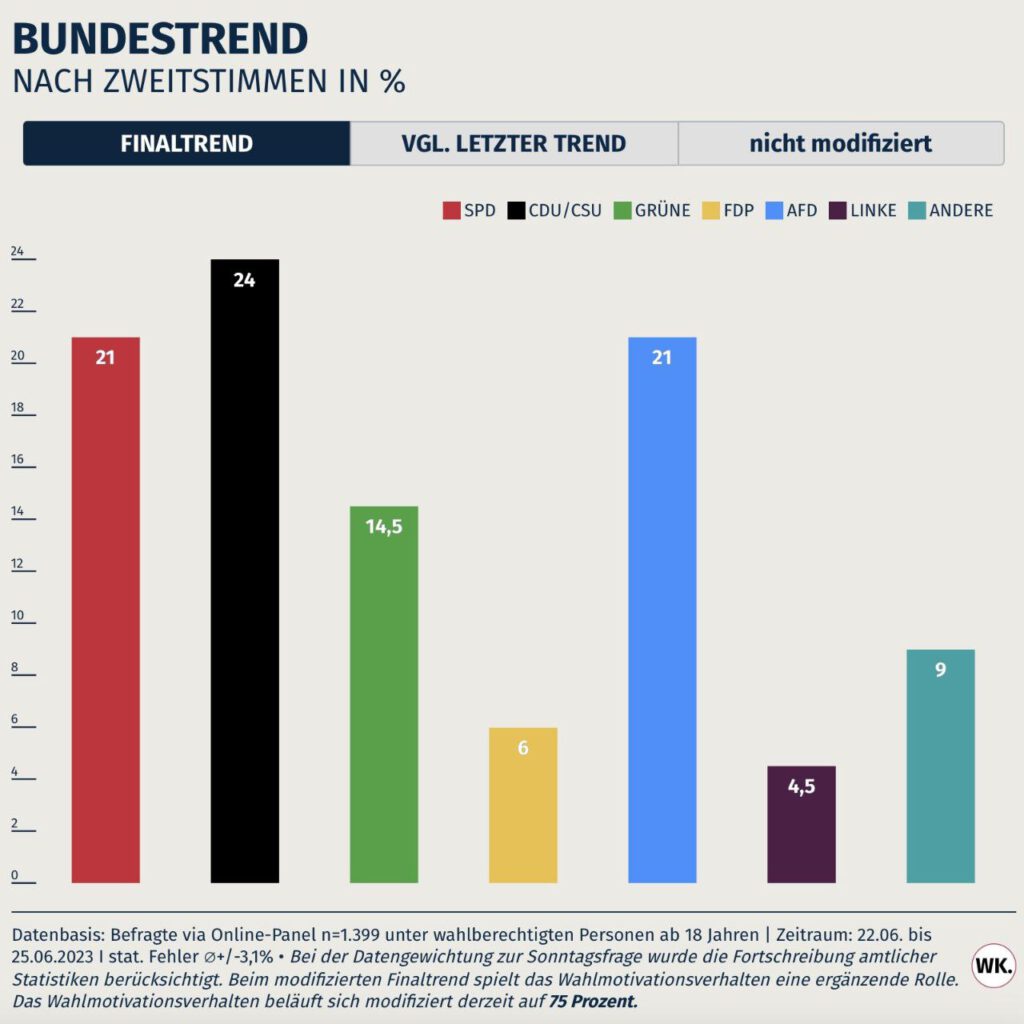
Eine Umfrage in Deutschland ergab, dass die rechtspopulistische Partei AfD die Sozialdemokratische Partei (SPD) von Kanzler Scholz überholt und zur zweitbeliebtesten Partei in Deutschland geworden ist.
(Quelle: CRI Deutsch, tagesschau)
In the current era of the coexistence of multiple civilizations, Chinese sinology studies are focused on rebuilding cultural self-confidence by establishing a sense of modernity and history. On the other hand, Western sinology studies are more concerned with interdisciplinary fields such as politics, philosophy, economics, linguistics, and sociology in an attempt to interpret China comprehensively.
Recently, Rogério Fernandes de Macedo, a Brazilian sinologist, was interviewed by China News Service, describing his experience of retracing the development of Western sinology and explaining the commonalities and individualities of Chinese and Western sinology studies.

I was first introduced to Sinology and Chinese culture through Chinese martial arts films and novels. For me, martial arts was the key to Chinese culture, which contained traditional cultural elements such as etiquette, morality, and martial virtues that captivated me.
Later, I studied martial arts under a master from Shandong, China. One day, my master asked me, “How can you understand martial arts if you don’t understand Chinese martial arts theories and customs?” This sparked my interest in Chinese culture. At first, my understanding of Chinese culture was rather superficial, and it was not until I entered a Chinese school in Brazil that I realized its profundity.
After entering the Federal University of São Paulo, I wanted to do some research on China or Sino-Brazilian relations. At that time I read Mr. Wang Li’s History of Chinese Linguistics, so I had an exchange with Fernanda Miranda da Cruz, a professor of linguistics in Brazil, which in turn gave birth to my two papers to discuss the origin of the mandarin pinyin alphabet and to review the history of chinese language teaching in Brazil.
After reading through Wang Li’s History of Chinese Linguistics and watching a documentary on his life, I am impressed by his strong academic conviction and become more and more interested in his research. He lived in a time when technology was not as advanced as it is now, but he overcame all the difficulties to complete tools such as Wang Li’s Ancient Chinese Dictionary and several monographs on linguistics.
Mr. Wang Li not only combined traditional Sinology, which studied language and writing from the perspective of documentary evidence, with modern Sinology but also applied the advanced theoretical tools of linguistics used in Western Sinology, forming his unique research method, which supported the future of Chinese linguistics. This compatible approach to Chinese and Western Sinological theory inspired me to conduct comparative Sinological research at the doctoral level.
Western Sinology in general can be summarized into three stages: the primitive Sinology stage, the origins of the Sinology stage, and the modern Sinology stage.
In the primitive Sinology stage, with the spread of the Jesuit and the colonial expansion of Europe, Western missionaries crossed the ocean and initiated the collision of ideas between China and the West.
Among them, the Italian missionary Matteo Ricci, based on his understanding of Chinese culture, reconciled Christianity and Confucianism through the strategy of cultural adaptation, while the French missionary Joachim Bouvet aimed to find a worldview consistent with Christianity in Chinese texts such as the I Ching.
In addition, the European mathematician and philosopher Gottfried Wilhelm Leibniz, the founder of primitive Sinology, interpreted Chinese natural theology through the use of canonical texts without ever visiting China and emphasized the importance of cultural exchange between China and the West by drawing an analogy between binary and the yin and yang lines in the I Ching.
At the stage of the origins of Sinology, the French sinologist Jean-Pierre Abel-Rémusat and the German linguist Friedrich Wilhelm Christian Carl Ferdinand von Humboldt engaged in an open discussion on the philosophy of language. They analyzed the grammatical framework of language to explore the relationship between language and thought, but limited their study to Greco-Roman languages with their flexural structure, so Chinese was not included in this discussion. But inspired by Rémusat, Humboldt later turned to Chinese as one of the most perfect languages in the world, and in the early 19th century Rémusat offered the first course on Sinology in Europe, marking its birth as a formal discipline in the West.
In modern times, the French sociologist and sinologist Marcel Granet advocated the use of sociological analysis to study Chinese society, focusing more on objective facts. Nonetheless, he was unable to study outside the Eurocentric framework due to the influence of the critical Chinese philosophical trends of his time.
In my opinion, modern Western Sinology is a very broad and open field of expertise that can contribute not only to the exchange between China and other countries but also to the mutual learning of civilizations.
Chinese sinology usually starts with its history and culture and uses the books of ancient and modern Chinese scholars as the basis of its field of study. Western Sinological studies rely mainly on their own constructed knowledge systems and methodologies, and do not take into account the specific social context and historical facts of China.
However, there is no shortage of scholars in Western Sinological studies who are concerned with local Chinese studies and value their traditional cultural values, and they are often respected and recognized by Chinese scholars. Wang Li, for example, speaks highly of the Swedish sinologist Hans Henrik August Bielenstein, saying that he profoundly influenced the development of Chinese linguistics.
Indeed, Chinese sinology has been influencing Western sinology as well. Many ancient Chinese histories were translated and transmitted to Europe by Western missionaries, giving birth to Western sinology in the Eurocentric and Orientalist thinking of the time.
Unfortunately, the criticism of Chinese thought in the history of Western philosophy is still a negative factor for sinology that cannot be ignored, and this influence is still present in the academic environment. It is a great misconception to dismiss Chinese philosophy simply because it is so different from ancient Greco-Roman thought.
Chinese and Western cultures are different due to their unique geographical location, history, and social development. I believe that the intermingling of Chinese and Western cultures depends to a large extent on cooperation between countries; cooperation is possible, but concrete practice is not easy.
If one follows the path of the previous struggle for interests among Western powers and holds Greco-Roman culture as the only paradigm to be followed worldwide, then the intermingling of diverse cultures among nations can only be a huge utopia.
However, if the intermingling of cultures is projected as an exchange between institutions such as schools and companies, it is quite feasible, since both sides share common interests and follow the law of cooperation.
In this respect, the Chinese philosophy of dealing with the world can play an important role, since Confucius and other representatives of the various schools of thought developed their ideas in times of war and pointed to the possibility of achieving peace through education and a suitable political approach. But all this presupposes that more and more people need to recognize and understand Chinese culture.
(Source: China News Service)
Die Gemeinde Tongli in Suzhou (Provinz Jiangsu) ist eine der sechs antiken Städte südlich des Jangtse in China. Sie wurde während der Song-Dynastie gegründet und hat eine Geschichte von über 1.000 Jahren. Die Stadt ist von fünf Seen umgeben und wird durch 49 Brücken verbunden. Das Netzwerk aus Flüssen teilt die Stadt in sieben Inseln auf. Die Brücken aus den Dynastien Song, Yuan, Ming sowie Qing sind gut erhalten.

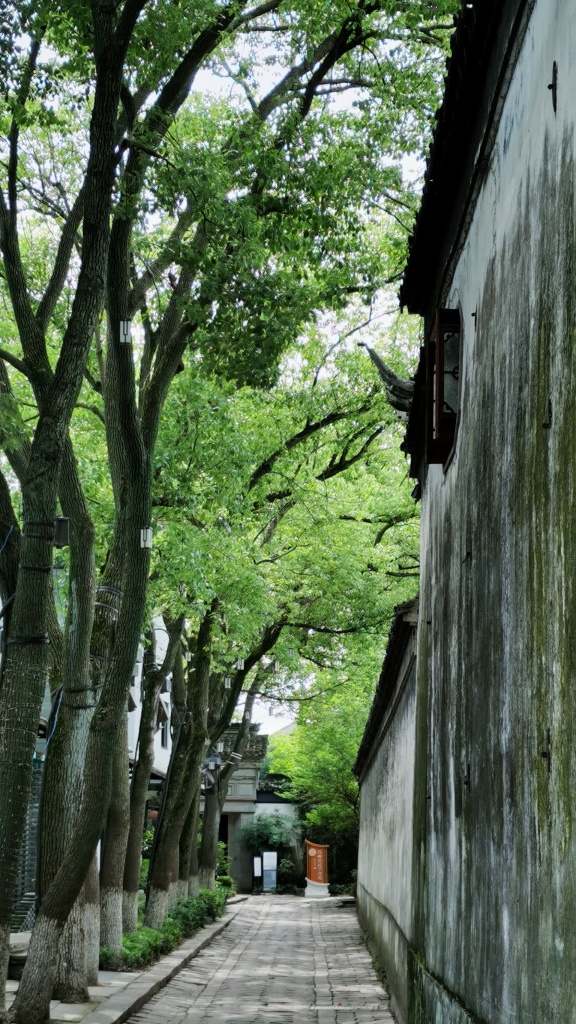
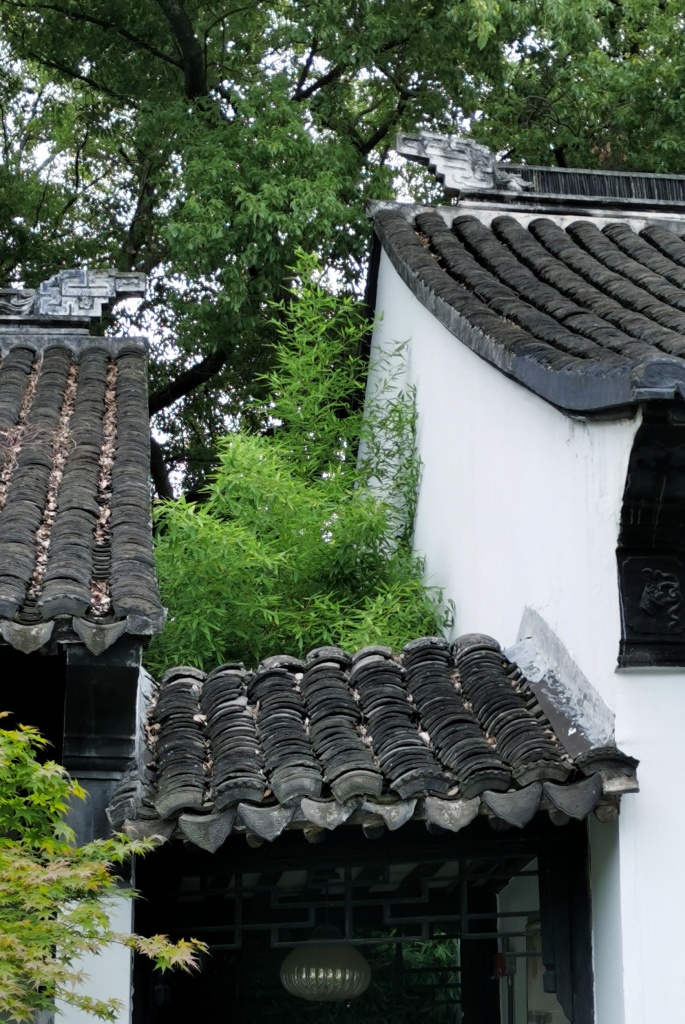

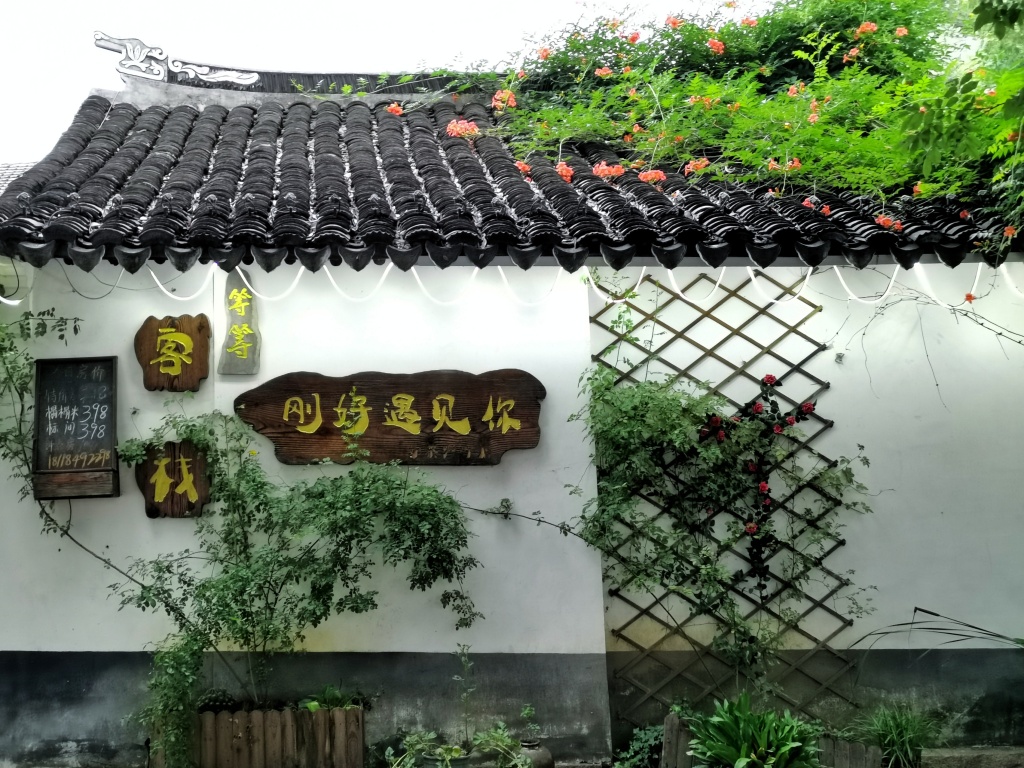
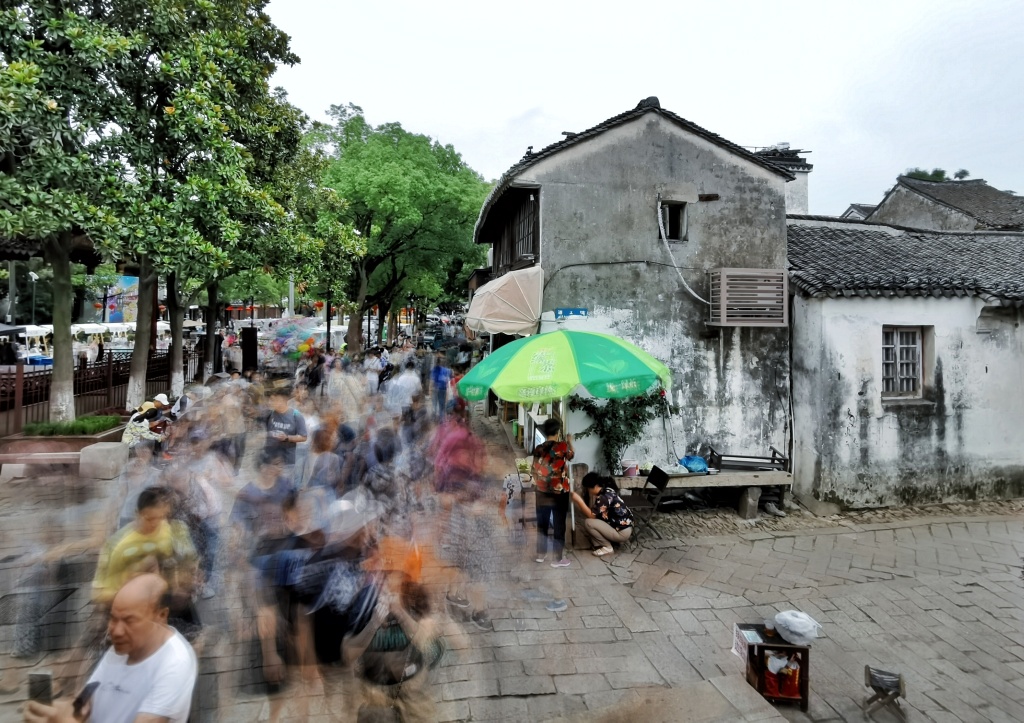

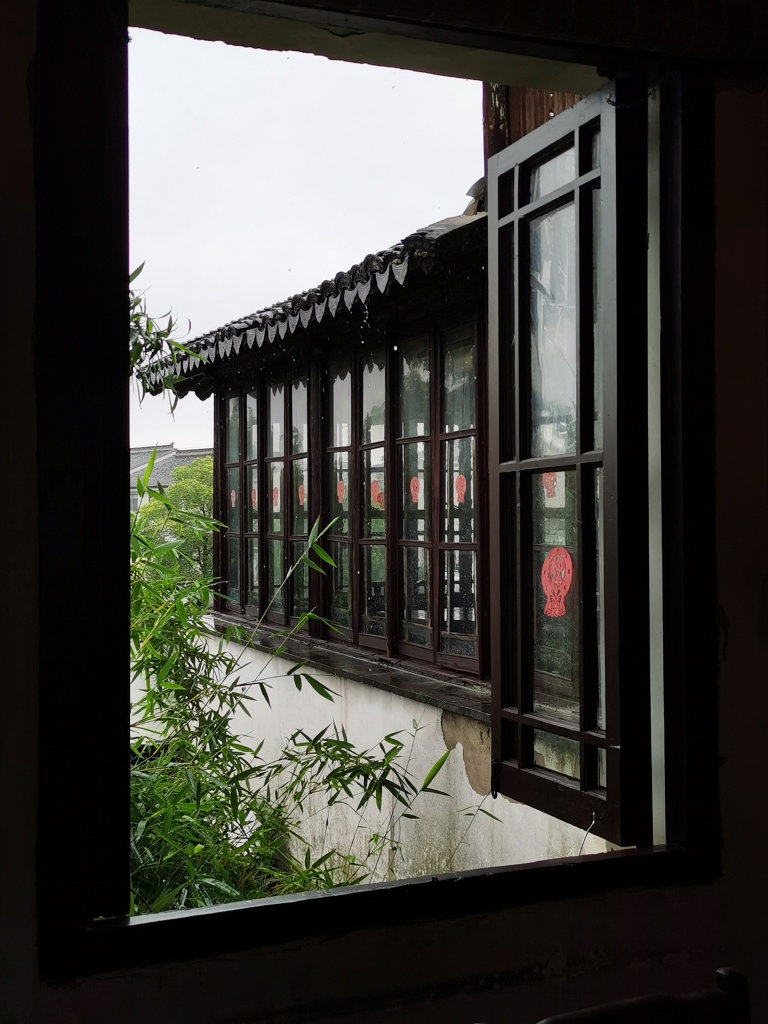
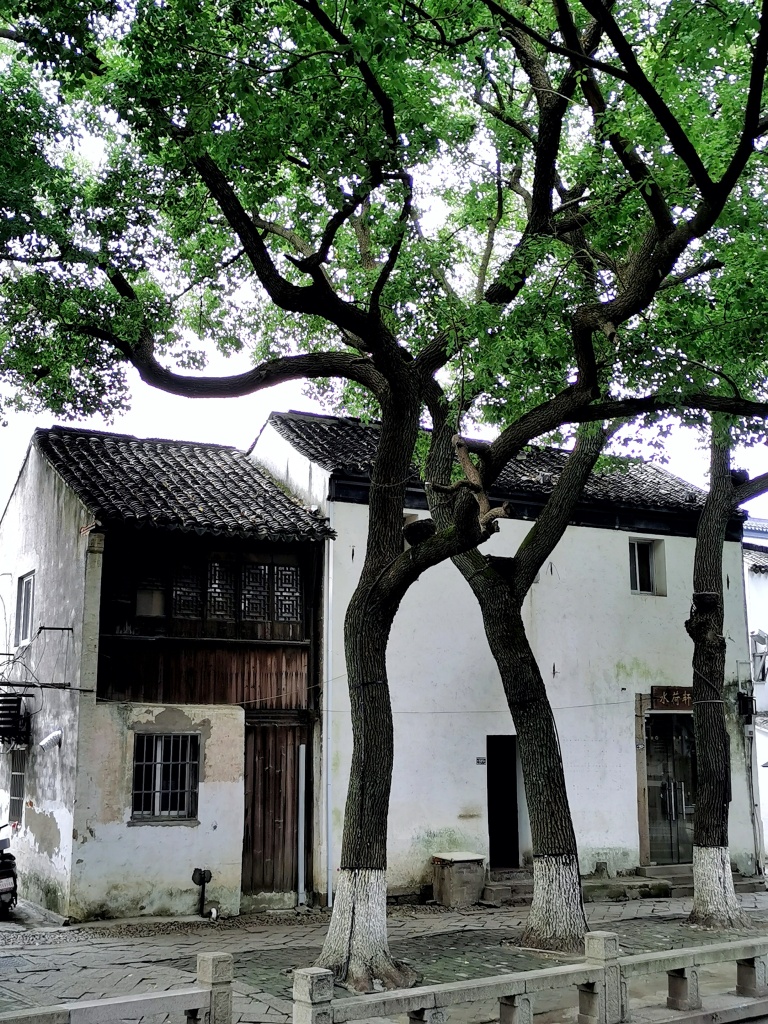
(Quelle: CRI Deutsch, VCG)
Vor 2100 Jahren war die Stadt Xi‘an in der heutigen Provinz Shaanxi Ausgangspunkt der alten Seidenstraße.
Die Seidenstraße war ein historischer Handelsweg, der verschiedene Regionen von Ostasien bis nach Europa verband.
Die Neue Seidenstraße, auch als OBOR (One Belt-Road Initiative) bekannt, verbindet die Wirtschaftsräume Asien, Europa und Afrika und fördert den internationalen Transport und Handel und die Versorgung der lokalen Bevölkerung.
Einem Bericht der Weltbank zufolge soll die Initiative bis 2030 dazu beitragen, weltweit 7,6 Millionen Menschen aus der extremen Armut und 32 Millionen aus der mittleren Armut zu befreien.
Die Infrastruktur ist der Eckpfeiler der Konnektivität und ein vorrangiger Bereich für den Bau der Seidenstraße. Zahlreiche Infrastrukturprojekte wie Autobahnen, Eisenbahnen, Häfen, Pipelines und Glasfaserleitungen haben Wurzeln geschlagen. Vor allem wurde auch der kulturelle Austausch gefördert.
Chinas führende Position in den Bereichen Photovoltaik, Windkraft und anderen Neue Energieprojekten ist zu einem Schlüsselbereich für die Förderung einer qualitativ hochwertigen Energieentwicklung in den Ländern entlang der Seidenstraße geworden.
Die Asiatische Infrastruktur-Investitionsbank (AIIB) spielt eine Schlüsselrolle bei der Finanzierung der Infrastruktur in einer Vielzahl von Entwicklungsländern.
China ist bemüht, die Verwendung des RMB für Transaktionen entlang der Handelsrouten zu erleichtern. Dadurch wird der RMB als internationale Reservewährung etablieren und seine Verwendung im internationalen Handel und Finanzwesen gefördert.
China hat bereits mit 151 Ländern und 32 internationalen Organisationen Kooperationsdokumente zum Aufbau der „Seidenstraße“ unterzeichnet.
Österreich sollte auch ein solches MOU unterzeichnen! Österreich hat eine geografisch günstige Lage in Mitteleuropa und kann die Seidenstraße als Möglichkeit erkennen, seine Rolle als wichtiger Verkehrsknotenpunkt zwischen Ost und West zu stärken.
Darüber hinaus können österreichische Unternehmen von Aufträgen und Geschäftsmöglichkeiten im Zusammenhang mit dem Ausbau der Infrastruktur entlang der Seidenstraße profitieren. Die Beteiligung an Projekten entlang der Seidenstraße kann auch dazu beitragen, den Technologie- und Wissenstransfer zu fördern und den Zugang zu neuen Märkten zu erleichtern.
Die Verwendung des RMB für Handelsabwicklungen könnte auch für österreichische Unternehmen und Finanzinstitute interessant sein, die in China investieren oder chinesische Investitionen anziehen möchten.
Präsident der Austrian Chinese Business Association
Rechtsanwalt
Prof. Dr. Georg Zanger
(Quelle: CRI Deutsch, VCG)